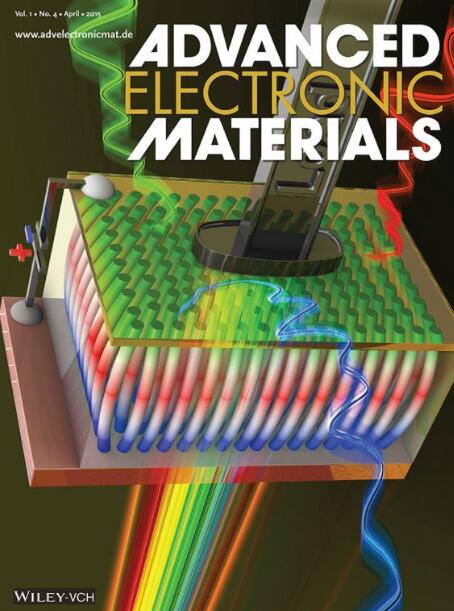单层BX (X = P, As, Sb):新型高性能晶体管沟道材料
IF 5.3
2区 材料科学
Q2 MATERIALS SCIENCE, MULTIDISCIPLINARY
引用次数: 0
摘要
互补金属氧化物半导体(CMOS)技术面临着在超短栅极长度下实现高性能的挑战。二维半导体,如单层BX (X = P, as, Sb),由于其电子和空穴的高载流子迁移率,提供了希望。本研究采用密度泛函理论(DFT)和非平衡格林函数(NEGF)方法来评估单层BX作为亚10 nm栅长金属氧化物半导体场效应晶体管(mosfet)和隧道场效应晶体管(tfet)的沟道材料。结果表明,单层BP和BAs mosfet具有高的导态电流和双极对称性,这是平衡n型MOS和p型MOS性能所必需的。在TFET结构中,两种材料都实现了低于60 mV dec−1的亚阈值振荡(SS),双轴拉伸应变下的BAs达到SS值,n型为43.35 mV dec−1,p型为37.70 mV dec−1。这些发现突出了单层BP和ba在显著降低功耗和提高开关速度方面的潜力,使它们在下一代CMOS技术中具有很强的竞争力,并解决了半导体小型化和性能增强方面的关键挑战。本文章由计算机程序翻译,如有差异,请以英文原文为准。
Monolayer BX (X = P, As, Sb): Emerging High‐Performance Channel Materials for Advanced Transistors
Complementary metal‐oxide‐semiconductor (CMOS) technology faces challenges in achieving high performance at ultrashort gate lengths. 2D semiconductors, such as monolayer BX (X = P, As, Sb), offer promise due to their high carrier mobilities for both electrons and holes. This study employs Density Functional Theory (DFT) and the Nonequilibrium Green's Function (NEGF) method to evaluate monolayer BX as channel materials for sub‐10 nm gate‐length metal‐oxide‐semiconductor field‐effect transistors (MOSFETs) and tunnel field‐effect transistors (TFETs). Results show that monolayer BP and BAs MOSFETs exhibit high on‐state currents and bipolar symmetry, essential for balanced n ‐type MOS and p ‐type MOS performance. In TFET configurations, both materials achieve subthreshold swings (SS) below 60 mV dec−1 , with BAs under biaxial tensile strain reaching SS values as low as 43.35 mV dec−1 for n ‐type and 37.70 mV dec−1 for p ‐type. These findings highlight the potential of monolayer BP and BAs to significantly reduce power consumption and improve switching speeds, making them highly competitive for next‐generation CMOS technologies and addressing key challenges in semiconductor miniaturization and performance enhancement.
求助全文
通过发布文献求助,成功后即可免费获取论文全文。
去求助
来源期刊

Advanced Electronic Materials
NANOSCIENCE & NANOTECHNOLOGYMATERIALS SCIE-MATERIALS SCIENCE, MULTIDISCIPLINARY
CiteScore
11.00
自引率
3.20%
发文量
433
期刊介绍:
Advanced Electronic Materials is an interdisciplinary forum for peer-reviewed, high-quality, high-impact research in the fields of materials science, physics, and engineering of electronic and magnetic materials. It includes research on physics and physical properties of electronic and magnetic materials, spintronics, electronics, device physics and engineering, micro- and nano-electromechanical systems, and organic electronics, in addition to fundamental research.
 求助内容:
求助内容: 应助结果提醒方式:
应助结果提醒方式:


